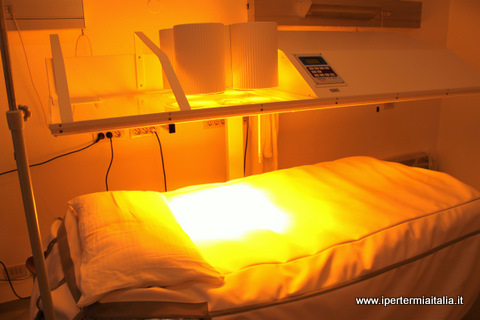Efficacia della Ipertermia Total Body
Nuovo studio sulla ipertermia total body

Un nuovo studio riporta risultati promettenti nel trattamento dei tumori trattati con chemioterapia ed ipertermia total body dandio l'avvio ad ulteriori studi di fase III.
Int J Hyperthermia. 2005 Mar;21(2):169-83.
The German 'Interdisciplinary Working Group on Hyperthermia'. Hildebrandt B, Hegewisch-Becker S, Kerner T, Nierhaus A, Bakhshandeh-Bath A, Janni W, Zumschlinge R, Sommer H, Riess H, Wust P; German Interdisciplinary Working Group on Hyperthermia. Source Medizinische Klink für Hämatologie und Onkologie, Campus Virchow-Klinikum, Charité Universitätsmedizin Berlin, Augustenburger Platz 1, D-13353 Berlin, Germany. Questo indirizzo email è protetto dagli spambots. È necessario abilitare JavaScript per vederlo.
Abstract
The term 'extreme' whole-body hyperthermia (WBH) describes the procedure of raising a patients' body-core temperature to 41.5-42.0 degrees C for 60 min. WBH represents the only hyperthermia technique that enables systemic heat treatment in patients with disseminated malignancies and is, therefore, usually combined with systemic chemotherapy. Up to now, several WBH-approaches have proved to be safe and associated with acceptable toxicity rates when radiant heat devices are employed. Until the late 1990s, the use of radiant WBH was restricted to a few specialized treatment centres worldwide. During the last 5 years, a larger number of WBH-devices were put into operation particularly in Germany. As a result, a novel generation on phase II trials on chemotherapy and adjunctive WBH in patients with various malignancies has been completed. Based on the promising results observed herein, first multi-centric phase III-trials on chemotherapy +/- WBH have been initiated, with a considerable number of patients treated at German institutions. The authors are members of the 'Interdisciplinary Working Group for Hyperthermia' ('Interdisziplinäre Arbeitsgruppe Hyperthermie'), a sub-group of the German Cancer Society. They formulated these guidelines in order to standardize the WBH treatment procedure and supportive measures, to provide some uniformity in the selection of patients to be treated and to define criteria of a successful WBH-treatment. These recommendations may be helpful to ensure the quality of WBH performed at different institutions.

 RSS
RSS 




